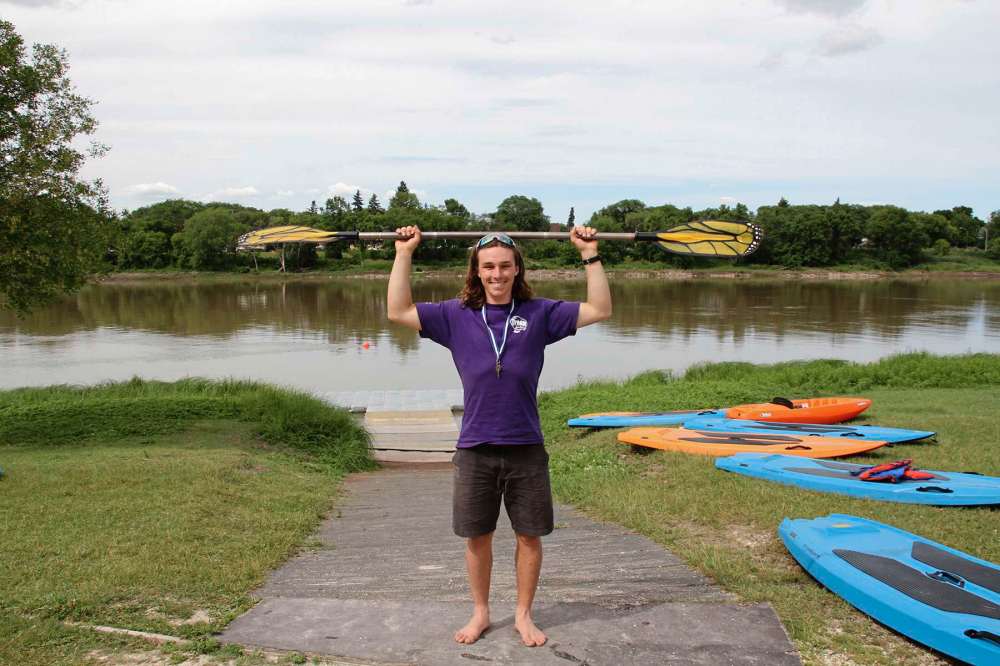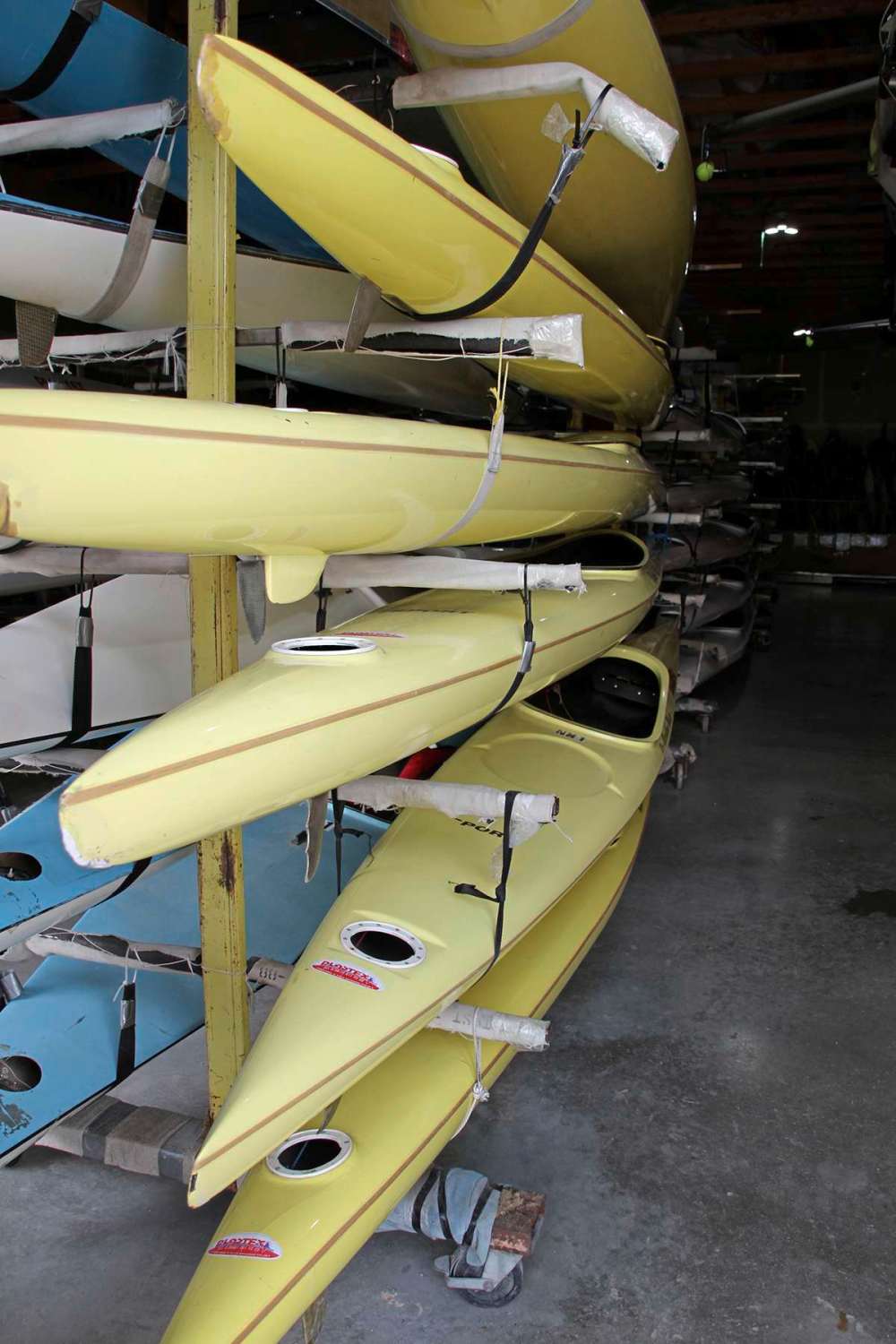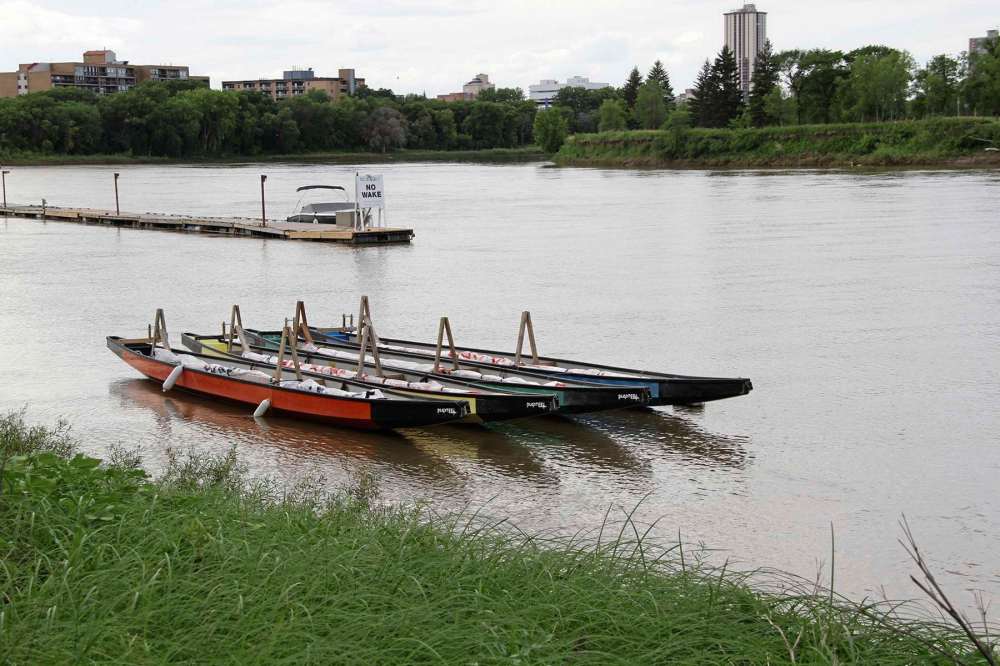Paddling in the heart of the city
Advertisement
Hey there, time traveller!
This article was published 05/08/2020 (1866 days ago), so information in it may no longer be current.
When it comes to messing around in boats, Jordie Smallwood might arguably have the best job in the city. He’s the manager of the Manitoba Canoe and Kayak Centre, located in a tranquil spot on Churchill Drive alongside the Red River.
That is, until you meet Florian Haskerkehrer, a summer camp counsellor and provincial team athlete, whose enthusiasm for introducing youngsters to the sports is boundless.
For those who haven’t yet come upon the building and floating dock located at 80 Churchill Dr., it acts as both headquarters for high-performance athletes and a site for recreational paddlers interested in a secure place to store their boat, learn better paddling techniques or take part in dragon boat races.

On a gorgeous day in mid-July, Smallwood, Haskerkehrer and three other camp counsellors were guiding a group of 16 kids through the basics of canoeing, kayaking and stand-up paddle boarding, along with plenty of on-shore games and crafts. There was lots of splashing and laughter as the kids enjoyed the sunshine and nearly-windless afternoon on the water.
“We’re really busy with summer camps this year,” Smallwood said. “Right from our first camp on July 6, when we sold out early, with 40 kids in both the English and French camps. I think it’s because there’s no Mini-U this year, and there are no options for overnight camps either. Parents still want their kids to learn something fun, and paddling is something they can pick up quickly.”
Each student is assigned a personal floatation device for the week, and the boats are sanitized after every day’s lesson has finished. All students must sanitize their hands between activities. In fact, Smallwood said he’s never seen the entire club building so clean, thanks to constant sanitizing efforts.
The camps are kept small, so each counsellor can guide students through the techniques for the different boats.
“One of the first things I might talk about is how people don’t know how to choose the right size of kayak paddle,” Haskerkehrer said, as he demonstrated where to place your hands on the paddle. “Having the right size allows for a strong grip and extension, and let’s you get a good catch and draw through the water.”
A member of the provincial team, Haskerkehrer was hoping to go to the national championships for canoe and kayak, but those were cancelled due to the pandemic. Instead, he organized a few fellow paddling enthusiasts to make a sunset to sunrise paddle on the solstice in June.

“There were four boats, and two of them made it to St. Vital Park and the rest of us to the gates of the Floodway at 3 a.m.,” he said. “It was something fun to do.”
The provincial team practices every morning, year-round, either using the centre’s weight room, running cross-country, or getting out on the water. They have another practice every afternoon. In the winter, they might get together to skate or go cross-country skiing.
Smallwood, who is the assistant provincial coach, said the majority of the 30 young athletes on the provincial team come up through the centre’s summer camps and into the youth program. For example, he started at age 10 by taking lessons, and fell in love with person-powered water sports. The team has youth between the ages of 10 and 23.
“There are other competitive clubs in the province, but we have the majority of high-performance boats here,” he said, adding the building has kayaks, high-kneel canoes, paddle boards and what he calls “war canoes”; huge, wood-strip canoes that have to be soaked in water to make the boards watertight.
Anchored just offshore are a fleet of dragon boats. The centre offers introductory lessons, a dragon boat league and a competition team. They are working on a plan to host a modified dragon boat festival in August, which would see each team assigned to a different location on land to keep them separate, and minimal interaction on the water.

“It’s on from Aug. 10 to 28. Instead of the teams racing each other, we’ll have each of the teams do a time trial in a 500-metre loop,” Smallwood said. “They’re all local teams. We can do eight teams a night, which we feel is manageable. The fastest teams will compete in the finals on Aug. 29.”
The dragon boaters came up with an ingenious method to keep the paddlers apart on the boats, he said. “As you might think, it’s not easy to be socially distant in a dragon boat,” said Smallwood. “So, we came up with a method to hang plastic sheet down the middle of the boat, and then have the people sit on every second bench.”
Private lessons are another thing that have received a pandemic-related boost. It started with a parent looking for something for her immuno-compromised child to do this summer and boomed when more people who didn’t feel comfortable in large groups wanted lessons, Smallwood said.
“For me, it’s introducing people to the enjoyment. They don’t have to be competitive. I want them to fall in love with paddling,” he said. “The centre is a place where you don’t have to own your own boat, which means it makes it accessible for many kids to get into paddling. We also have equipment for para-kayaking, which means people with lower-body issues can use our boats.”
As he turned back toward the flowing river, Smallwood had a final bit of advice for beginner paddlers: “There’s a mistake everyone makes just once, and that’s to go the wrong way on the river when they start, and find themselves having to paddle hard to get back, against the current. So remember: always go upstream first.”

For more, see the Manitoba Paddling Association’s website at www.mpa.mb.ca and look under the Manitoba clubs tab for the Manitoba Canoe and Kayak Centre.




